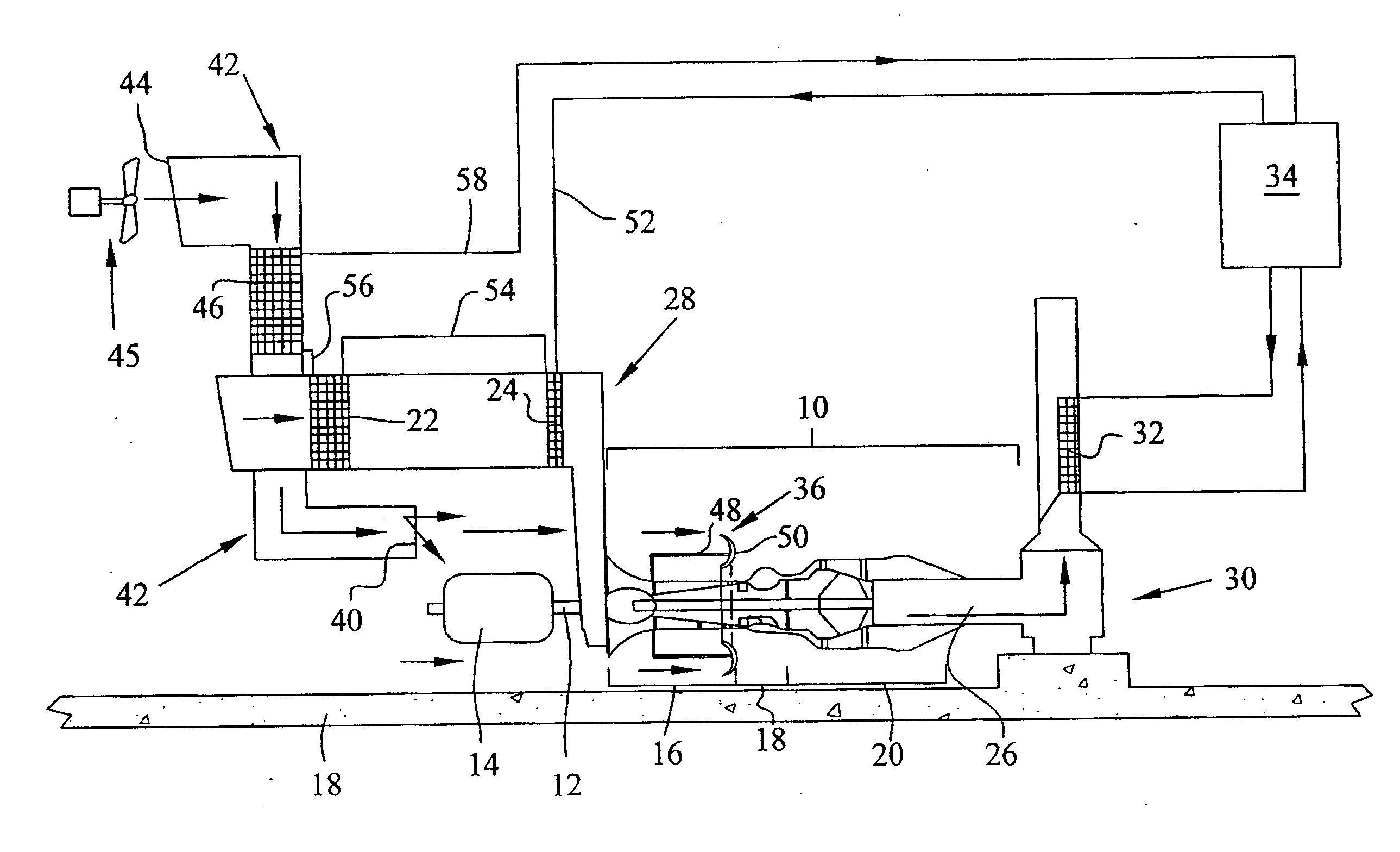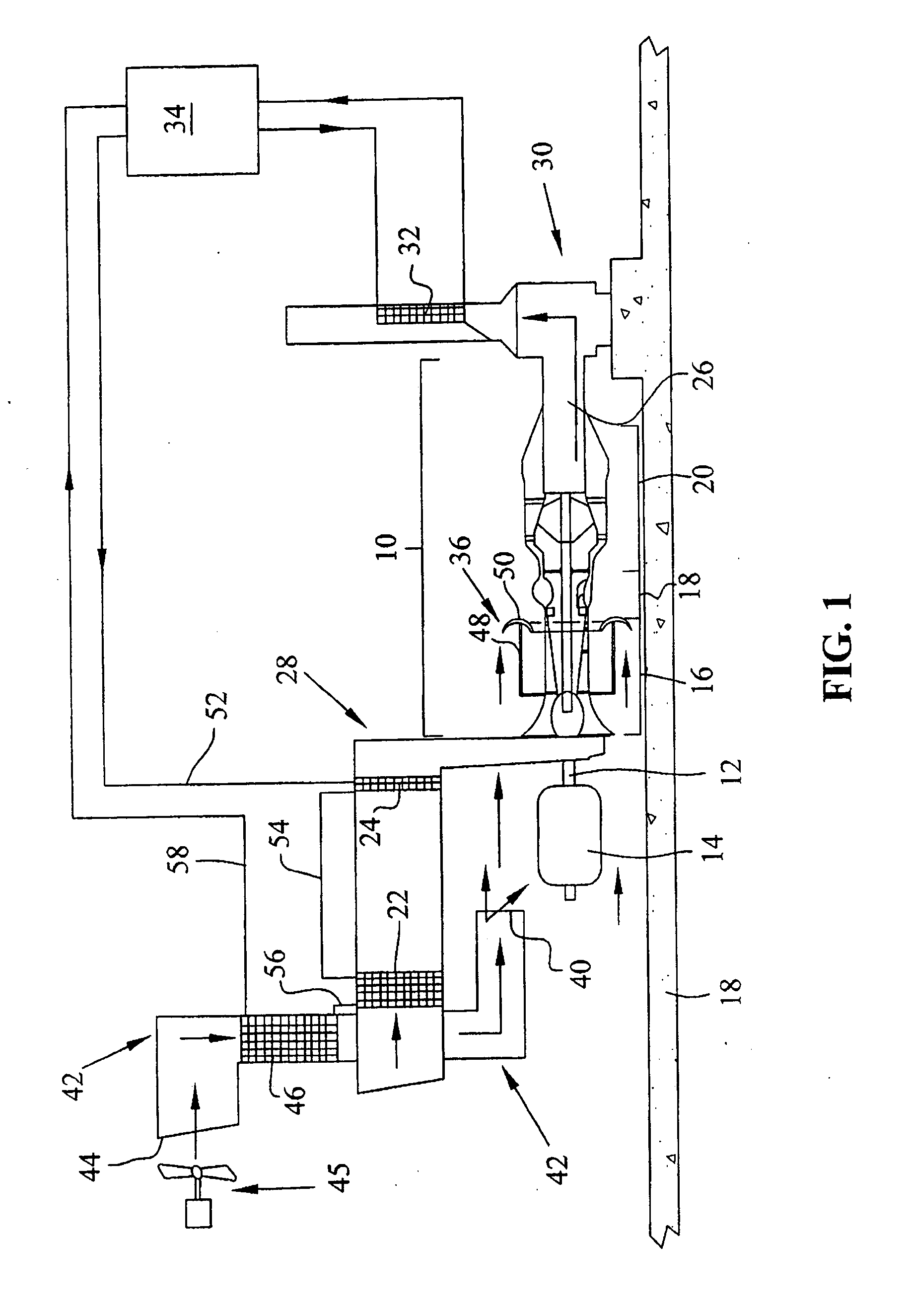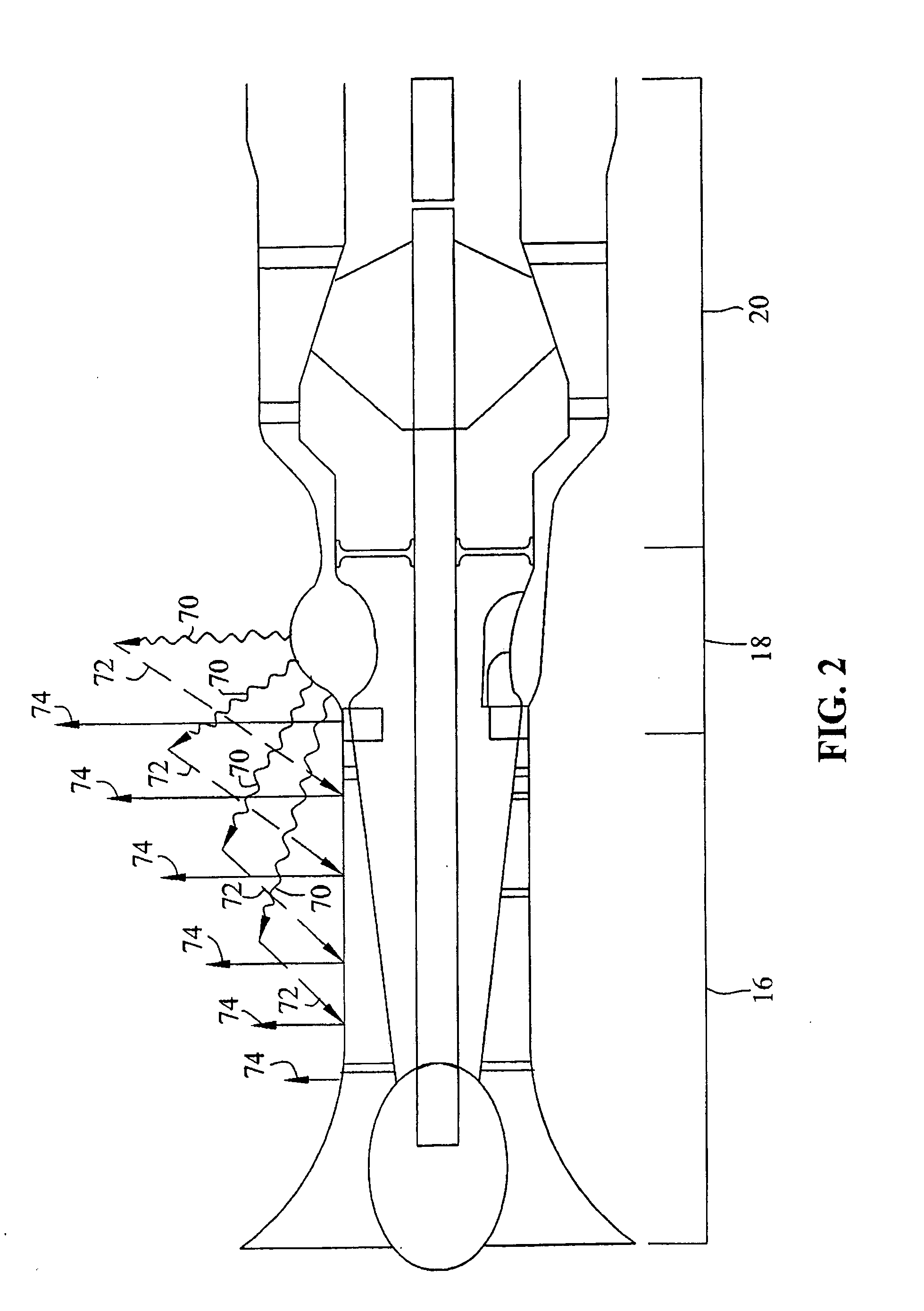Heat absorbing and reflecting shield for air breathing heat engine
a technology of air breathing and heat engine, which is applied in the direction of machine/engine, combination engine, reciprocating combination engine, etc., can solve the problems of additional temperature rise, reduce the efficiencies of air compression (gas), and increase the flow of air, so as to improve the overall thermal efficiencies of the ct
- Summary
- Abstract
- Description
- Claims
- Application Information
AI Technical Summary
Benefits of technology
Problems solved by technology
Method used
Image
Examples
Embodiment Construction
[0026]For the purposes of promoting an understanding of the principles of the invention, reference will now be made to the embodiments illustrated in the drawings and specific language will be used to describe the same. It will nevertheless be understood that no limitation of the scope of the invention is thereby intended.
[0027]Referring now to FIG. 1, a combustion turbine, or air breathing heat engine, is schematically shown at 10, and as is conventional with such gas turbines, includes compressor 16, combustion portion 18, and turbine 20. Turbine 20 utilizes the gases from combustion portion 18 to drive shaft 12, which is drivingly connected to generator 14 for power generation. Turbine 10 operates in the stationary mode in that, unlike the aero-related turbines on which its design is based and which are naturally moved while used in flight, the turbine is fixedly mounted to a support surface or on the ground during use.
[0028]Intake air duct 28 supplies air to compressor 16 of tur...
PUM
 Login to View More
Login to View More Abstract
Description
Claims
Application Information
 Login to View More
Login to View More - R&D
- Intellectual Property
- Life Sciences
- Materials
- Tech Scout
- Unparalleled Data Quality
- Higher Quality Content
- 60% Fewer Hallucinations
Browse by: Latest US Patents, China's latest patents, Technical Efficacy Thesaurus, Application Domain, Technology Topic, Popular Technical Reports.
© 2025 PatSnap. All rights reserved.Legal|Privacy policy|Modern Slavery Act Transparency Statement|Sitemap|About US| Contact US: help@patsnap.com



